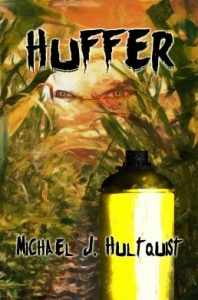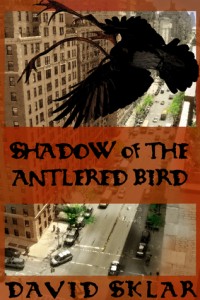Archive for 2010
Tina Hall Interviews Kinuko Y Craft
 A graduate of Kanazawa College of Art in Japan, Kinuko Y. Craft came to the United States to continue her study of Art at the School of Art Institute of Chicago in the early sixties. Her work has graced publications like Playboy, Time, and The New York Times Magazine to name a few. And on books by Stephen King, Isaac Asimov, C.S. Lewis, Tanith Lee and Andre Norton. Kinuko has works in the permanent collections of The National Geographic Society, The National Portrait Gallery at The Smithsonian, The Cornish Colony Museum in Windsor, VT,and The Museum of American Illustration, New York City. Craft’s work has gained her numerous awards in her field. Her works appear on countless licensed products. Influenced by the works of Leonardo Da Vinci, the Pre-Raphaelites and Symbolist painters, she is without a doubt one the best and most well known fantasy artists of the day. Her works offer serene comfort and remind people to take time to appreciate the beauty in all things.
A graduate of Kanazawa College of Art in Japan, Kinuko Y. Craft came to the United States to continue her study of Art at the School of Art Institute of Chicago in the early sixties. Her work has graced publications like Playboy, Time, and The New York Times Magazine to name a few. And on books by Stephen King, Isaac Asimov, C.S. Lewis, Tanith Lee and Andre Norton. Kinuko has works in the permanent collections of The National Geographic Society, The National Portrait Gallery at The Smithsonian, The Cornish Colony Museum in Windsor, VT,and The Museum of American Illustration, New York City. Craft’s work has gained her numerous awards in her field. Her works appear on countless licensed products. Influenced by the works of Leonardo Da Vinci, the Pre-Raphaelites and Symbolist painters, she is without a doubt one the best and most well known fantasy artists of the day. Her works offer serene comfort and remind people to take time to appreciate the beauty in all things.
What was it like growing up in Japan?
I walked to school every day so I could feel the seasons change. The only “violence” I knew was fighting with my siblings by pulling their hair or throwing sticks at each other. Small town life in Japan was peaceful, safe and the streets were always filled with people walking. Almost no one had cars. We all rode the train or a bus when we had to go to the next town.
Did you always have a love of art? What led you to pursue a career in the field?
My grandfather was an art lover and a master calligrapher. He had a collection of books on Western Art. They fascinated me and I poured over their pages endlessly. He also had a print by Maxfield Parish called “Stars” which I fell in love with. I painted and drew when ever I could and even stole my sisters set of Craypas once while she was in school and painted a mural on a sliding door in the living room when nobody was there.
What was going through your mind your first day in the United States?
I arrived by passenger ship in San Francisco in January of 1964. That part was exciting and invigorating. The City was beautiful as I had expected. However the American Cultural Center in Kanazawa (The city where I went to Art School) had recommended that I take the bus from San Francisco to Chicago to better “See America.” The cold, bleak landscape, miserable food and the uncleanliness of the bus terminals were nothing like anything I had expected. There was and still is nothing like it in Japan that would have prepared me for the experience. It was terribly disappointing, but once I arrived in Chicago I knew I had made the right choice.
Did you ever think back then you would have become as successful as you have?
First of all, I don’t think I am successful. I don’t know what it is in my case. I only knew then that I wanted to paint and would let
nothing stand in my way to make that happen. Besides, I have never thought I have achieved anything bright artistically. All I can do is what I do. It’s like trying to climb to the top of a ladder that has no end.
A lot of your work has involved fairy tale/mythological themes. Were you always drawn to those things? Do you have a favorite story from either of those genres? Why do you think such tales are timeless in their appeal?
They are the culmination of human wishes, dreams and hope. I feel the imagination expressed in them is something we must have to go through life. As a pre-schooler, I always asked for anyone around to tell me stories. I heard folk tales, legends; and ghost stories so scary they made me afraid to go to the bathroom at night. After I started school and finally could read, I found a book titled “Greek Myth for Young Readers” in my father’s pile of old books. About the same time, a grade school friend loaned comic-book versions of the Iliad and the Odyssey. It opened me to a dreamworld I had never known. They have guided me into a world of literature and imagination which fuels my soul as an artist.
You have produced covers for such authors as Tanith Lee, Isaac Asimov, Stephen King, and Andre Norton. What is it like to see your work complement the works of such talented authors?
I don’t really think about it. I’m not into fame. They are all phenomenal writers who’s stories offer plenty of fodder for visual interpretation. Fortunately, I pret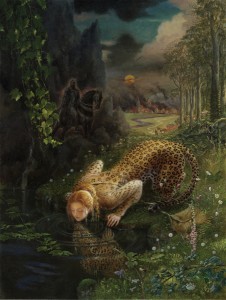 ty much do what ever I like. So far none have complained, thankfully. They make wonderful reading in the bathtub.
ty much do what ever I like. So far none have complained, thankfully. They make wonderful reading in the bathtub.
What it is like to work with your husband Mahlon F. Craft and daughter Marie Charlotte Craft? Do you find yourself more inspired when working with your family?
Mahlon does everything I don’t. I paint, do the laundry and dishes and cook for our dog. Mahlon does everything else. We enjoy working together on books because we can collaborate as author/designer and artist. There are no bruised egos if I ask him to change a scene so it better fits what I want to paint. My daughter was coached by editors when writing Cupid and Psyche and King Midas and the Golden Touch. She has a degree from Columbia University in Literature. I hoped writing professionally might be something that would take on her, but it didn’t.
You have contributed to several children’s books. Do you enjoy that?What does it feel like to have the chance to inspire future generations to dream and create?
I’m not sure what you mean by “contributed.” In all of the books I have illustrated, mainly I am left on my own and my charge is to
create art that does justice to the story, while entertaining me as a painter.
What one subject have you yet to cover that you would most like to?
A ghost story–something mysterious, dark and beautiful.
What is one little known thing about yourself you’d be at liberty to share with our reader’s?
Nothing, really, except that I am insanely fascinated with big canines..
What advice would you offer the artists of tomorrow?
Be prepared for the world you know as a student to change in ways you can’t even begin to dream of. Drawing skills are basic to all forms of visual art. They are the tools of the trade, and being facile as a draftsman will allow you to adapt your output and nurture your imagination to move with markets that are sure to change in the future.
What do you think you would of been if not an artist?
I don’t know. Maybe I would have been born as a sea shell, or plankton, a cloud, or wind.
What do you like to do in your spare time?
Just moping around aimlessly, or picking ticks off of my dog Wolfgang and some reading.
What projects are currently working on?
I have two mural designs to complete as paintings which will be enlarged into glass mosaics. It’s been a trying assignment because there are many people involved on the client side and their opinions had to be considered as the designs evolved. After that I will
complete the work on illustrating a Christmas story Mahlon wrote about 11 years ago for publication in 2012. And I have to provide enough finished drawings for an exhibit at my gallery sometime next year. Next I have to finish Beauty and the Beast which I started 8 years ago and haven’t touched since.
How do you hope to be remembered when your time comes?
As an artist inspired by beauty who’s best painting will always be the next one. On the other hand, I live and think for the moment. I don’t much think about what will happen after I’m gone. I won’t hear it nor care, perhaps, but I do hope to meet all of my dogs there.
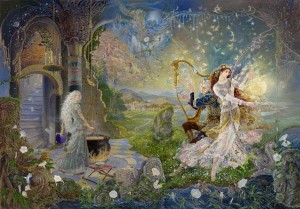 Where can your fans go for the latest on your career?
Where can your fans go for the latest on your career?
So far, just my web site. I’m not a computer user, nor am I interested in social networking. Posting to a Facebook page or on
Twitter would be pure drudgery for me–and that’s the truth. If I ever do either of these things, it will be through Mahlon, though he’s
already overloaded with work.
Book Review: On the Verge of Madness by George Wilhite
On the Verge of Madness by George Wilhite
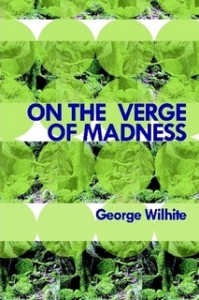 Book Review by A. R. Braun
Book Review by A. R. Braun
On the Verge of Madness by George Wilhite contains echoes of H. P. Lovecraft that reverberate through the short stories throughout, but with a fresh approach and lively dialogue. The nine short stories in the volume weave a colorful—and sometimes bloody—collage of the macabre, raising fear in a unique voice.
The first three tales follow the same storyline. The book starts off with a foreword by Arthur Chaldean about his nephew Victor’s disappearance after his wife went missing. Arthur found a collection of notebooks that comprised Victor’s journal, and Arthur provides the narrative necessary after each series ends, lending an air of realism to the story. When the diary begins, the expectation has been forged so brilliantly one can’t wait to find out what ensues.
In “Checks and Balances,” an alcoholic named John must face the toughest part of Alcoholic Anonymous’s twelve-step program, step eight: apologizing to those he’d hurt when drunk. Some forgive him easily, others hold a grudge, but none are waiting to tear him apart like his wife. On the way to her house, he’s tempted to crawl back into the bottle and must match wits with a sinister force offering an easy way out. In “The Gangster’s New Clothes,” a hit man finds out what it’s like to step into his victims’ shoes. Literally.
On the Verge of Madness left me mostly satisfied from beginning to end with clever storytelling and strong characters that made me care. Only one story, “A Plea from the Cradle,” didn’t blow me away and left me scratching my head. Still, way over 500 is a great percentage, and I recommend this tome to all horror aficionados.
New Feature: Niteblade Contributor Interviews
In the coming days we will be introducing a new feature here on the blog, interviews with Niteblade contributors. Our in-house interviewer, Amber Stults, will be interviewing people who have contributed to past issues of Niteblade and sharing those with us here every other week. I’m looking forward to getting to know more about the people behind Niteblade, and I hope you are too.
Submishmash
After a lot of careful consideration I have decided to start using Submishmash to handle Niteblade’s fiction and poetry submissions. You can see our new, schmancy, updated guidelines here, which include a link to the new submission forms. It is my sincere hope that once I work through the backlog of emailed submissions and start using the automated system exclusively it will speed up response times for all submitters and ultimately help make Niteblade run smoother and more efficiently. If the system works well for the fiction and poetry submissions I will begin using it for book reviews, interviews and art blog showcases as well.
This change means that over the next few weeks Niteblade will be looking for a handful of slush readers. This is a volunteer position, but can provide invaluable insight as to what it’s like to be on this side of the submissions process. You would need to be familiar with Niteblade and the style of content we run. If you’re interested and would like more information email me at Rhonda@Niteblade.com
Tina Hall Interviews John Everson
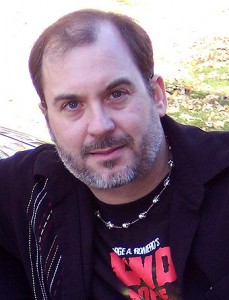 John Everson is well-known for his novels (Covenant, Sacrifice,The 13th, and Siren). Covenant gained him a Bram Stoker Award for a first novel and his short stories appear in several collections and well over 50 magazines. His latest novel is Siren. John is also co-founder of the publishing company Dark Arts Books, where he works tirelessly assisting with editing, providing cover artwork, layouts and promotion of the company. It is said when he wishes to escape from writing he can be found in his hidden studio recording pop/rock songs.
John Everson is well-known for his novels (Covenant, Sacrifice,The 13th, and Siren). Covenant gained him a Bram Stoker Award for a first novel and his short stories appear in several collections and well over 50 magazines. His latest novel is Siren. John is also co-founder of the publishing company Dark Arts Books, where he works tirelessly assisting with editing, providing cover artwork, layouts and promotion of the company. It is said when he wishes to escape from writing he can be found in his hidden studio recording pop/rock songs.
Can you tell us a little about your beginnings? As a child where you always drawn towards what would later become your career? Do you recall what the first story you ever wrote as kid was about?
As a kid I was a voracious reader, especially of anything fantastic. Growing up I read all the standard kids series — Hardy Boys, Nancy Drew, Tom Corbett, Space Cadet — but I quickly graduated to Golden Age sci-fi novels from Isaac Asimov, Robert Heinlein, Clifford Simak, Poul Anderson, and more.
I loved the twisted macabre-tinged sci-fi of Richard Matheson, and his short fiction in particular was probably a huge influence on my writing. But the first story I remember writing as a kid was a space opera set in Isaac Asimov’s Foundation universe. Thankfully, that one is long lost in a landfill.
When did you first know you wanted to become a writer? What did it feel like to learn you can actually make a living doing something you love?
I always knew that I’d write in some sense. In grade school and high school I wrote a lot of song lyrics (and songs) along with poetry and short fiction. Somewhere along the way I decided I’d go into Journalism and work for newspapers, which I did. I quickly found though that I really preferred the “fluff” writing over anything related with actual news. So in college I worked a lot on the features side of the newsroom, doing celebrity interviews and album reviews. Back then I interviewed everyone from Jay Leno to the Throwing Muses. I even wrote a TV column at one point. That carried on after college — I left my first job at a suburban newspaper
to work for a music magazine (though I kept writing Pop Stops, the weekly music column I started at the newspaper for the next 20 years as a freelancer). Those early years at the newspaper and the music magazine are when I first began publishing short horror fiction regularly as well. Eventually I took a job in trade journalism so that I could actually pay the mortgage, so I must say that the writing that I most enjoy doing still does not pay the bills.
Does your son share your passion for written word? Do you find him to be much like you? I hear he likes to hear you play an acoustic guitar. Do you enjoy times when you get to take a break from your work and indulge him that?
My son has had a love for words from the start. I dedicated my short fiction collection Needles & Sins to him because of his love for stories. He knew his alphabet at 17 months and just today we came back from the kindergarten parent-teacher conference to find that he’s reading a year beyond his peer group. So yeah, in his love of words and music (and stubbornness), he’s a lot like me. And I love to share songs and music with him. Music is probably the biggest love of my life, and he seems as enamoured with it as I have always been. That’s pretty cool to see.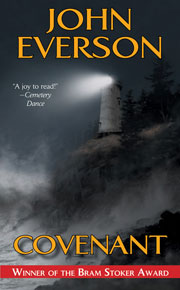
What kind of music do you make there in your hidden studio lair?
Not much, unfortunately, these days. I’ve been so focused on writing the past couple years, that I’ve really not played much at all. I do love to write pop-rock songs though. Nothing makes you feel better than a really hooky, well-produced pop song!
What does it feel like to win the Bram Stoker Award? Do you enjoy his works? Which of his works do you feel was his best?
The Bram Stoker Award is given out annually by the Horror Writers Association to recognize achievement in the field. It’s voted on by other horror writers — your peers — so it was really amazing to win that award. I actually had gone to the award ceremony that year simply to network… so nobody was more shocked than I was to find out that I won!
As for Bram Stoker himself? The only work of his I’ve read was Dracula, but that novel I read 2-3 times in high school. I loved it.
What was the best advice anyone ever gave you?
Go ahead and write fiction if you can’t not do it. But don’t quit your day job.
Do you prefer to write novels or short stories, or do you like them both equally?
I like the instant gratification of short fiction, because you can start and finish a short story in the same day. It’s nice to have to have a completed piece of work in that short of a time. That said, when you finish a novel,it’s really a monumental feeling because it’s so much work to write one. Over the past few years I’ve definitely grown to focus more on novels, which allow you to expand and tell a more complex a story than short fiction does.
What do you think you’d be doing if you hadn’t became a writer?
Well… currently my day job is involved with creating websites for online education. So… I suppose I might be doing that whether I became a fiction writer on the side or not. Or maybe I would have gone completely batshit crazy, quit the conservative comfort of my day jobs and gone out on the road as a rock musician. A guy can dream…
Do you enjoy providing the artwork for covers? Is there any one cover you have worked on that you love most?
I kind of  backed into creating bookcovers. It started when I tried to help out a small press that was publishing an anthology that I had stories in. I wanted to help make the cover a little better than their original, and the next thing I knew, I was designing the next half dozen releases for them. That led me to founding Dark Arts Books (where I also do the covers) and to doing a line of small hardcover chapbook covers for Delirium Books. Nearly all of my covers feature photo collages of photos I’ve taken, and my
backed into creating bookcovers. It started when I tried to help out a small press that was publishing an anthology that I had stories in. I wanted to help make the cover a little better than their original, and the next thing I knew, I was designing the next half dozen releases for them. That led me to founding Dark Arts Books (where I also do the covers) and to doing a line of small hardcover chapbook covers for Delirium Books. Nearly all of my covers feature photo collages of photos I’ve taken, and my
favorites are probably Spooks! and Failure, which feature images of my wife and Like A Chinese Tattoo and Suckers which feature LA model Jade Paris.
You can see most of my cover and website art work at http://www.johneverson.com/artwork.htm
Other than Alan Clark what other illustrators do you admire?
Travis Anthony Soumis has done the book covers for my last three full-length small press hardcovers, Needles & Sins, The 13th and Siren. I really love his style, and adapted the imagery from Needles & Sins to serve as the focal banner on my website.
Are there any of your works that hold more personal meaning for you?
Siren and Needles & Sins are probably my most personal novel and short story collection, respectively. Siren because it deals with the fear a father has for losing his child (the lead character is haunted by the death of his son which he watched and couldn’t prevent) while the collection includes stories that really touch on some of my deepest emotions.
Why do you think people are so drawn towards the darker side of things?
We all are afraid of the dark… so more than anything else, we want to know what’s hiding there… perhaps in the knowing, we can conquer our fear.
What is one subject you’d like to cover that you haven’t had the chance to yet?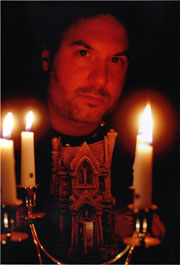
Honestly… I don’t suppose there is one that I haven’t touched on yet. I’ve been publishing fiction now for nearly 20 years. I’ve written 5 adult novels(one to be published next year as The Pumpkin Man) a young adult novel about goblins and witches and kids (currently being edited so that it can be shopped) and four short story collections that hold nearly 60 stories between them. There are still stories I want to tell… but my key themes have consistently been obsession and erotic horror. And I’ve done those a lot!
What works are you currently working on that you are most excited to get out there to the people?
(I just turned in my fifth novel The Pumpkin Man a couple months ago, so I’m pretty excited about that, though it won’t be out for at
least 10 months. I’m also about to start edits on my young adult novel, tentatively titled A Gathering of Goblins. So I’m looking forward to polishing that so that hopefully my agent can find a good home for it where lots of kids will have the chance to read it. Because in the end, that’s why I got into writing in the first place — to provide others the same kind of enjoyment that I found in books when I was a kid. It’s kind of all come full circle.
Book Review: HUFFER by Michael Hultquist
Michael J. Hultquist’s novel, HUFFER, simply blew me away.
When “Satan” appears to Gus Gerring as a tourist wearing a Hawaiian shirt, it might have very well been a hallucination brought about by Gus’s favorite past-time, huffing paint. His girlfriend thinks so too. When he starts seeing the darkness inside of other people, a so-called “gift” from his Satan, he starts to question.
Who wants to see “what evil lurks in the hearts of men?” Not I, and not Gus either, because as his Satan’s gift makes it’s presence known in his friends and family, his mind starts spinning –and not from the paint fumes either.
I liked the novel, but it took me a while to get in to the story due to my own personal opinion of huffing paint. Sometimes it can be difficult to overcome one’s own biases, but for this novel, it’s worth it. Told in present tense from Gus’s perspective, HUFFER gave me the chills as though the man was telling me his story, standing in front of me. Gus feels like an unlikely hero from the start, but Michael Hultquist does an excellent job of providing a natural storytelling voice.
This or That?
I want to know what you think.
I’ve fallen behind on reading submissions, it’s pretty chronic actually, and reached the point where I’ve thought about bringing in a slush reader or two to help speed up the process. The best way for me to do that is to begin using a submissions service/system that requires creating an account and logging in to submit rather than continuing to accept submissions through email.
Some people don’t like creating accounts / signing up to websites to submit.
You tell me, if it would speed up the rate at which your work would be considered and responded to, would you be willing to create an account to submit to Niteblade?
Interview With Jeremy C. Shipp
One of the perks to doing interviews with authors for Niteblade is learning about their work and sharing it with you. Today, Niteblade readers, is a lighthearted interview with Jeremy C. Shipp. Jeremy is a Bram Stoker Award nominated author. He lives in Southern California and his newest book, Fungus of the Heart, went on sale this month.
You’ve been writing novels since you were 13 and had one of your short stories published when you were 18. Do you remember when you first considered yourself a writer?
The first time I considered myself a writer, I was a baby, writing a hieroglyphic-style story about two-headed dragon on the living room wall. Then, in 4th grade, I felt like a writer once more when I wrote my first rather long short story. At 13, after I finished my first novel, I thought, “Now I’m a writer.” And then, at 18, when my first short story was published I thought, “Now I’m definitely a writer.” And finally, in 2007, when my first novel was published I thought, “Now I’m a writer for sure!”
In 2009 you received a Bram Stoker Award nomination with your novel, Cursed. Writers often work in vacuums and don’t always hear from their readers. Was it validating to be nominated by your peers?
It was definitely a touching moment in my career to be honored by my fellow horror writers. I was as excited as Atreyu when he rode Falkor for the first time.
How do you pick the titles for your books?
First I pull Scrabble tiles out of a magic yard gnome hat and use those letters to come up with possible titles. After that doesn’t work, I put on my thinking cap and come up with an appropriate title. I ended up using “Fungus of the Heart” as the name of my newest book because I find the image and concept to be emotionally evocative and thematically fitting.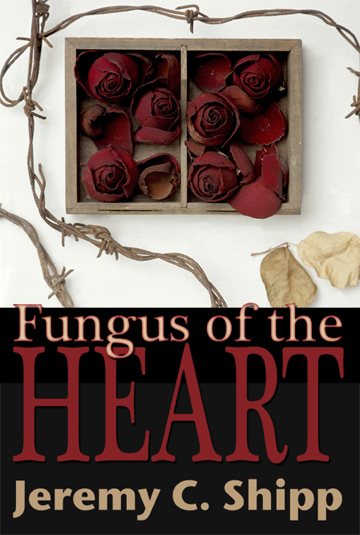
I understand your newest collection of short stories, Fungus of the Heart, goes on sale this month. Did you write the stories specifically for the collection or did you select them because they were connected in some way?
I wrote most of the stories with the collection in mind. I also included three older tales that meshed well with newer stories. Each story in this collection is a unique world, but the worlds are all orbiting the same thematic sun. And while that doesn’t make any sense, it’s true.
What are you working on now?
I’m writing a middle grade fantasy novel as well as a new horror story collection. There’s also a musical stage play in the works based on my short tale “Nightmare Man.” In addition, I’m trying to build a giant robot that looks like Mr. Belvedere. I can’t remember why.
You live with yard gnomes and attic clowns. Do you ever think they will wage a war for more territory?
Attic clowns find war to be hilarious, and they might attempt to kill all the yard gnomes in my garden as a joke. However, the gnomic shamans wield magical sporks that can transform clowns into Skittles. And so, the war wouldn’t last very long.
Is there anything else you’d like to share with our readers about Fungus of the Heart or your other works?
You can read one of the stories from Fungus of the Heart here: http://www.dharlanwilson.com/dreampeople/issue34/excerptshipp.html
You can also check out more free stories of mine here: http://jeremycshipp.com/onlinestories.htm
Book Review: Huffer by Michael J. Hultquist
Huffer by Michael J. Hultquist
Book Review by A.R. Braun 
In Huffer by Michael J. Hultquist, Gus Gerring has a paint-huffing habit. He’s finds he’s been at the fumes for too many years when an entity Gus calls “Satan” shows up in a Hawaiian shirt. Soon, he’s revealing things Gus doesn’t want to know.
Gus sees strangers’ eyes turn black. Then his loved ones have the same black eyes. It gets worse when he sees the insidious secrets inside people’s minds and too much to take when he sees the hidden evil in his own girlfriend and family. With his sanity at stake, Gus wonders if this is a gift meant to enhance his life like “Satan” says or a curse meant to destroy him. The way his life’s spiraling out of control, he’ll soon find out.
Huffer by Michael J. Hultquist is a scathing horror novel that caught my attention from the beginning and held me captive throughout the whole book, making me fear I’d get his power. The story is wonderfully woven through realistic events in Midwestern Illinois that could happen to anyone. I recommend this book without a second’s hesitation. If Huffer doesn’t freak you out, you haven’t got a pulse.
Book Review: Shadow of the Antlered Bird by David Sklar
Book review by Sarah Hayes
College student April doesn’t know much about Tam – but when his life is in danger from an invisible enemy, April is drawn into his world and joins him on a road trip across the state of California to dodge death from a shadow. Tam doesn’t know anything about April, but ends up relying on her as a means of escape from the creature that wants to destroy and become him. If Tam thinks he’s finally escaped his mother’s grasp, he’ll soon find out how wrong he is.
The world of Shadow of the Antlered Bird is one of magic hidden beneath the veneer of technology. It is also a story of discovery for not only Tam and April but also for readers discovering how science and spells can seamlessly synthesize in the hands of a talented storyteller.
David Sklar’s premiere work, Shadow of the Antlered Bird, should make readers excited for his next writing projects. His writing is tightly contained yet manages to weave in great amounts of detail and imagery in a modest amount of pages. The dialogue is fresh and rolls naturally from the characters’ mouths even as the situation becomes more and more bizarre. It is a beautifully put together book of fantasy and drama told by a very human cast of characters that will enthrall every reader completely.
